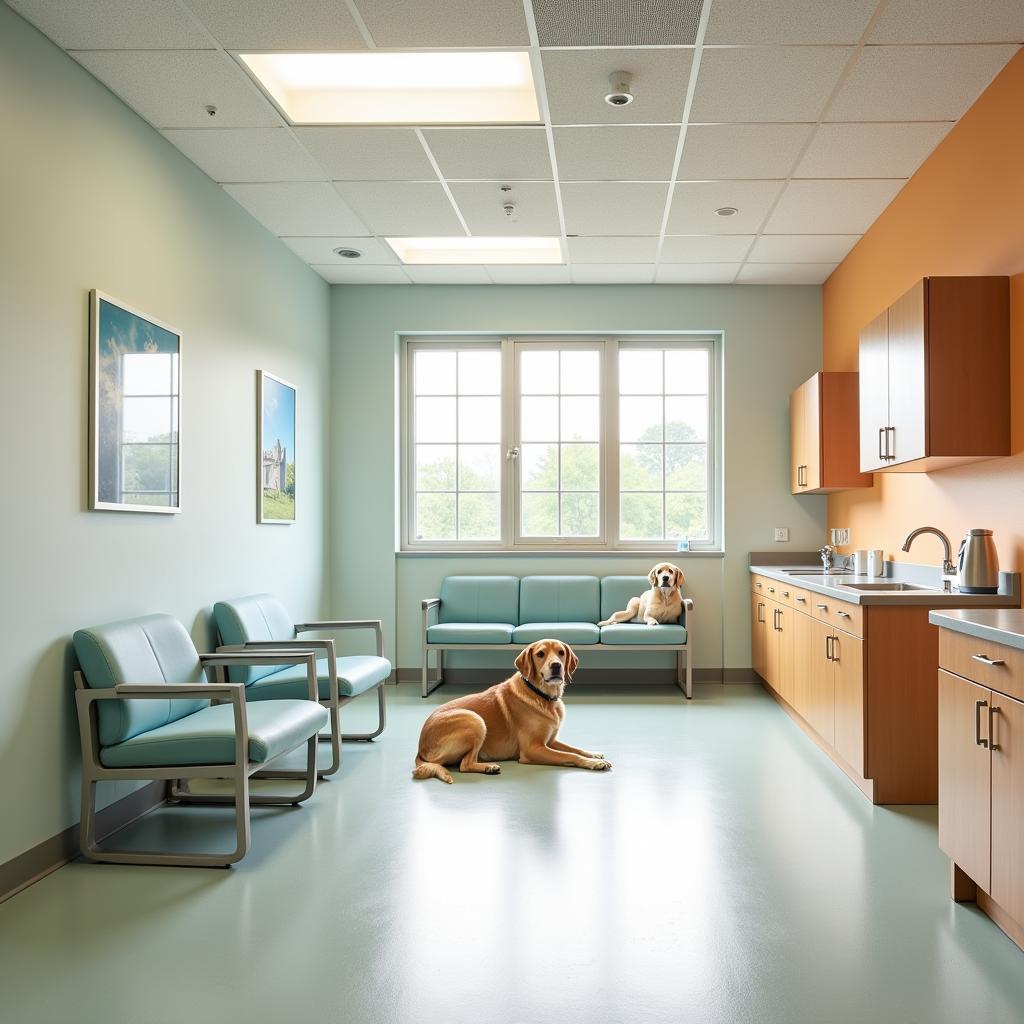When visiting an animal hospital, a pet owner’s main concern is their furry friend’s health and well-being. However, the design and atmosphere of the facility also play a crucial role in creating a positive experience for both animals and their humans. Thoughtful Animal Hospital Interior Design goes beyond mere aesthetics, focusing on functionality, safety, and the reduction of stress for all.
 Comfortable Waiting Area in an Animal Hospital
Comfortable Waiting Area in an Animal Hospital
The Importance of a Welcoming Atmosphere
The first impression matters. A well-designed animal hospital reception area should be inviting and calming. Utilizing natural light, comfortable seating, and a soothing color palette can help reduce anxiety for both animals and their owners. Consider incorporating elements that appeal to both, such as calming artwork or a water feature.
 Separate Waiting Areas for Dogs and Cats
Separate Waiting Areas for Dogs and Cats
Designing for Function and Flow
Vet hospital design requires careful consideration of functionality and flow. Exam rooms should be easily accessible and equipped to handle a variety of species and sizes. Spacious corridors and clear signage contribute to a more efficient and less stressful environment.
Optimizing Exam Rooms for Efficiency and Comfort
Exam rooms should be designed with both the veterinarian’s workflow and the animal’s comfort in mind. Features like adjustable examination tables, ample storage space, and sound-absorbing materials can significantly improve efficiency and reduce anxiety in animals.
Creating Dedicated Treatment Areas
Separating treatment areas from public spaces is crucial for infection control and noise reduction. Designing these areas with durable, easy-to-clean surfaces and adequate ventilation ensures a hygienic and efficient workspace for the veterinary staff.
Reducing Stress Through Design
A stressed animal is more difficult to examine and treat. Implementing design elements that minimize stress is paramount in vet hospital floor plan layouts.
Sound and Scent Control
Excessive noise and unfamiliar scents can trigger anxiety in animals. Using sound-absorbing materials on walls and ceilings, along with effective ventilation systems, can create a more peaceful and less overwhelming environment.
Species-Specific Considerations
Different species have unique needs. For instance, cats are often more comfortable in elevated spaces, while dogs may prefer a space closer to the ground. Incorporating elements like cat trees or designated dog runs can make a significant difference in their comfort level.
Incorporating Biophilic Design Principles
Biophilic design brings elements of nature indoors. Integrating natural light, living walls, and natural materials can have a calming effect on both animals and humans, contributing to a more positive experience.
Case Study: Norcross Animal Hospital
The recently renovated Norcross Animal Hospital provides an excellent example of thoughtful animal hospital interior design. By incorporating many of the elements mentioned above, they have created a welcoming, calming, and functional space that prioritizes the well-being of both animals and humans.
Conclusion
Animal hospital interior design is about much more than creating a visually appealing space. It’s about crafting an environment that prioritizes the comfort, safety, and well-being of animals and their human companions. By focusing on functionality, stress reduction, and a welcoming atmosphere, veterinary facilities can create a positive experience that fosters trust and strengthens the bond between animals, their owners, and the veterinary care team. When planning a new facility or renovation, consider consulting with a design firm specializing in Orr Animal Hospital GA or animal hospital Hollister CA for expert guidance in creating an optimal healing environment.